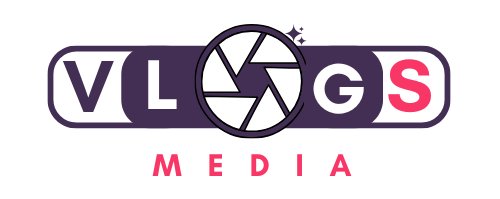Fashion is constantly evolving, reflecting the changes in culture, technology and the environment. As we enter 2025, the fashion world is going through a significant shift. This new era isn’t just about the clothes we wear; it’s about how fashion shapes our identity, connects us globally and adapts to the demands of a more conscious and technology-driven world. Here’s a look at the key changes that will define the new era of fashion in 2025.
1. Sustainable fashion becomes the norm
Sustainability has been a buzzword in the industry for years, but in 2025, it’s no longer optional – it’s a necessity. With increasing awareness of the environmental impact of fast fashion, both consumers and brands are making conscious choices.
Brands are investing in eco-friendly materials like organic cotton, bamboo and innovative textiles made from recycled plastic. Circular fashion – where clothes are designed to be reused, repaired or recycled – is becoming mainstream. Even major luxury brands are launching secondhand collections, allowing customers to buy high-quality secondhand pieces.
For consumers, sustainable fashion means buying fewer but better products and focusing on quality over quantity. People are also using rental services for special occasions, swapping platforms and doing DIY upcycling projects to reduce waste.

2. Technology is taking over fashion
The fashion industry in 2025 is closely intertwined with technology. From design to the shopping experience, tech innovations are redefining the way we interact with fashion.
AI-powered design: Artificial intelligence is helping designers predict trends, create new styles and even customize garments according to individual preferences. This means faster production and more personalized collections.
Virtual try-ons: Augmented reality (AR) allows customers to virtually try on clothes before purchasing. Whether you’re shopping online or in-store, you can now see how a dress fits or how sunglasses fit your face without physically wearing them.
Digital fashion: Virtual garments that only exist in the digital world are becoming increasingly popular. Influencers and gamers are buying clothes to wear in virtual environments, blurring the lines between fashion and technology.
Blockchain and NFTs: Blockchain technology brings transparency to the supply chain and allows customers to verify the origin and authenticity of their purchases. At the same time, NFTs (non-fungible tokens) are being used for exclusive digital collections and virtual fashion shows.
3. Inclusivity is redefining beauty standards
The new era of fashion is embracing diversity like never before. In 2025, beauty will not be defined by a single standard, but by individuality and authenticity.
Brands are creating collections that cater to all body types, skin tones and gender identities. Adaptive fashion for people with disabilities is also gaining traction, ensuring that style is accessible to all.
Campaigns feature models of all ages, sizes, ethnicities and abilities, challenging outdated beauty ideals. Social media has played a huge role in this shift, with influencers and creatives celebrating their unique looks and inspiring others to do the same.

5. Genderfluid fashion is going mainstream
Fashion has always been a form of self-expression, and in 2025 the lines between men’s and women’s clothing are disappearing. Genderfluid fashion is no longer a niche market, but a significant part of mainstream collections.
From oversized suits to flowing skirts, clothing is designed to be worn by anyone, regardless of gender. Big brands and independent designers alike are embracing this shift, creating collections that focus on style and comfort rather than traditional gender norms.
6. Fashion as a social statement
In 2025, fashion isn’t just about looking good – it’s a way to make a statement. Consumers are using their clothing choices to express their values, beliefs and concerns.
Whether it’s wearing a t-shirt with a powerful slogan, supporting a brand that champions equality or choosing sustainable fabrics, people are aligning their fashion choices with their principles. This changedel has encouraged brands to be more transparent and socially responsible, knowing that consumers expect them to stand for something meaningful.
7. Luxury is being redefined
The definition of luxury has changed dramatically. It is no longer about logos and status symbols, but about exclusivity, sustainability and craftsmanship.
Modern luxury consumers value bespoke, made-to-order items that are made with care and precision. They are also attracted to experiences, such as private fittings or invitations to exclusive fashion shows, rather than simply owning expensive items.
Ethical practices are now an integral part of luxury. Brands that prioritize fair wages, environmentally friendly production and charitable initiatives are considered truly luxurious.

8. The digital fashion show revolution
Fashion shows are no longer limited to physical runways. In 2025, digital fashion shows have become the norm, allowing designers to showcase their collections to a global audience.
These shows use AR and VR technology to create immersive experiences. Viewers can explore a virtual runway, interact with models, and even shop the collection in real time. This approach not only reduces costs and environmental impact, but also makes haute couture accessible to all.
9. The importance of mental health in fashion
The fast-paced nature of the fashion industry has often overlooked mental health, but that’s changing in 2025. Brands and designers are prioritizing wellbeing and creating collections that promote comfort and self-care.
Loungewear and “feel-good” fashion are on the rise, focusing on soft fabrics, relaxed fits, and calming colors. Wellness campaigns encourage consumers to embrace their imperfections and prioritize self-love.
The industry is also addressing the mental health issues faced by workers, models, and designers, promoting a more supportive and compassionate environment.
10. The role of social media in the future of fashion
Social media is still a driving force in the fashion world, but its role has evolved. Platforms like TikTok and Instagram are not just for showcasing outfits, but also for fostering communities and driving innovation.
In 2025, brands will use social media to connect directly with customers, create collections together, and even crowdsource ideas. Influencers remain powerful, but authenticity is key—followers prefer creators who share honest reviews and authentic content.
In addition, social commerce is booming, with platforms offering seamless shopping experiences directly from posts and stories.
Conclusion
Fashion in 2025 is a reflection of the times—innovative, inclusive, and mindful. It’s about more than trends; it’s about creating a better future through conscious choices, technological advancements, and a celebration of individuality.
This new era of fashion invites everyone to join in, whether it’s by supporting sustainable brands, trying out digital designs or embracing diverse styles. As we navigate this exciting shift, one thing is clear: fashion is no longer just about clothes; it’s a powerful force shaping culture, technology and the way we live. Accessibility for people with disabilities is gaining traction, ensuring style is accessible to all.
Campaigns feature models of all ages, sizes, ethnicities and abilities, challenging outdated beauty ideals. Social media has played a huge role in this shift, with influencers and creatives celebrating their unique looks and inspiring others to do the same.







